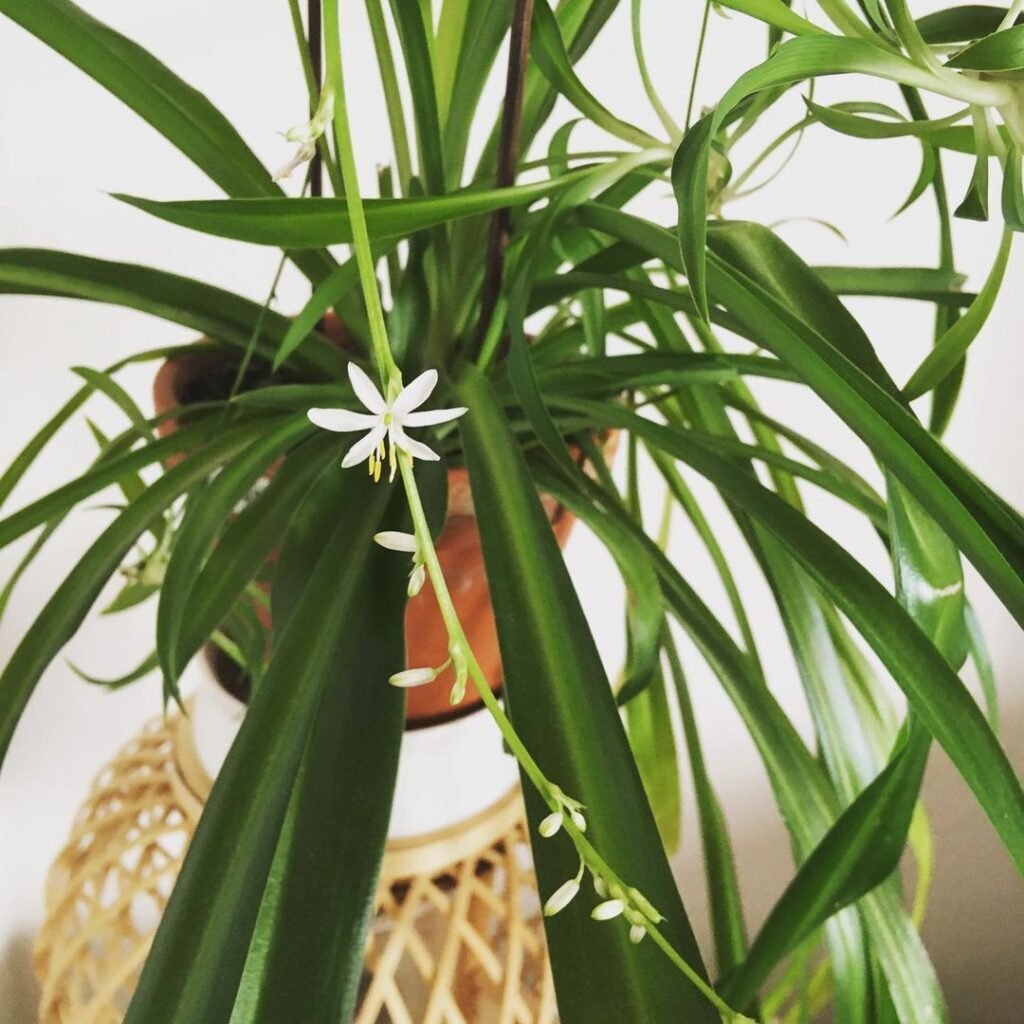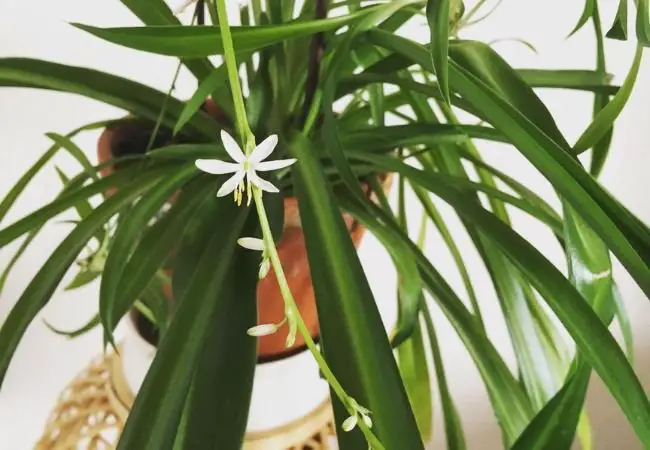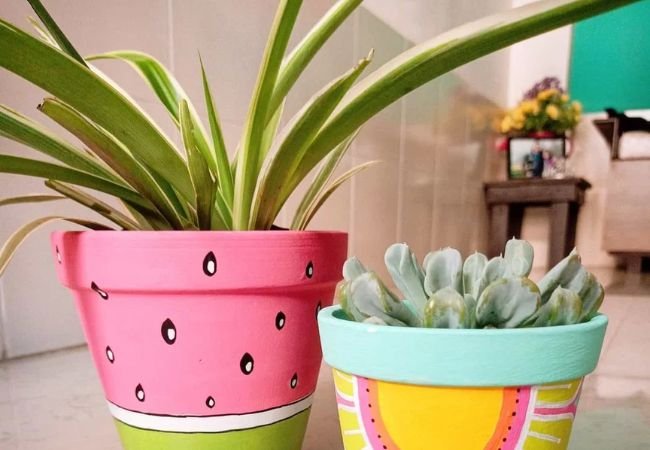Curious about spider plant flowers? Ashley Scott, with 10 years of gardening experience, answers do spider plant flowers turn into babies?, are they toxic?, and more!
Hey there, plant enthusiasts! I’m Ashley Scott, and with 10 years of gardening experience under my belt, I’ve grown to love the quirks and surprises of houseplants—especially spider plants. If you’re here, you’re probably wondering about spider plant flowers. Maybe you’ve spotted those tiny white blooms on your plant and thought, “What’s going on here?” or “What does it mean when my spider plant flowers?” Well, you’re in the right place!
In this blog post, I’ll walk you through everything you need to know about spider plant flowers, answering all the big questions like do spider plant flowers turn into babies?, are spider plant flowers rare?, and even how to pollinate spider plant flowers. I’ll share some personal stories from my own plant-parenting journey, sprinkle in some practical tips, and make sure you leave with all the info you need. This article is written for my fellow gardeners in the USA, so expect simple US English and a conversational vibe. Let’s get started!
What Are Spider Plant Flowers?

Spider plants (Chlorophytum comosum) are famous for their long, arching leaves—often green with white stripes—and those adorable spider plant babies (aka spiderettes) that dangle from the mother plant. But every now and then, they surprise us with spider plant flowers. These are small, star-shaped, white blooms that pop up on long, wiry stems. They’re delicate and understated, but they add a special charm to an already awesome plant.
From my experience, spider plant flowers tend to show up when the plant is happy—think bright, indirect light and a cozy, slightly root-bound pot. They usually bloom in spring or summer, though I’ve had a few surprise blooms in fall too! Curious about what makes spider plants thrive? Check out my guide on How to Care for Spider Plants.
Do Spider Plant Flowers Turn Into Babies?
Let’s tackle one of the most asked questions: Do spider plant flowers turn into babies? I get why this confuses people—those flowers and spider plant babies both appear on those long stems, right? Here’s the deal: No, the flowers don’t turn into spiderettes.
The spider plant flowers are part of the plant’s sexual reproduction process. If pollinated, they can develop into tiny seed pods. Meanwhile, the spider plant babies are little clones of the mother plant, growing directly from her on those same stems. So, while they’re neighbors, they’re not the same thing.
I’ll never forget the time I saw my first spider plant flowers and waited excitedly for them to become babies—only to realize I’d mixed up the two! If you want to grow more plants from those babies, I’ve got you covered in my post on Propagating Spider Plants: A Beginner’s Guide.
Is It Bad If My Spider Plant Flowers?
Next up: Is it bad if my spider plant flowers? Nope, not at all! Seeing those blooms is actually a good sign—it means your plant is mature and healthy enough to reproduce.
That said, some folks (including me sometimes) snip off the flowers to encourage the plant to focus its energy on growing lush leaves or more spider plant babies. It’s totally up to you. If you love the look of spider plant flowers, leave them be—they won’t hurt anything. I once let mine bloom just to see what would happen, and it was a fun little experiment!
How Long Do Spider Plant Flowers Last?
Wondering how long do spider plant flowers last? Each individual flower sticks around for just a few days—opening in the morning and often closing up at night (yep, spider plant flowers close at night!). But here’s the cool part: the flower stem can keep producing blooms for a few weeks, giving you a nice little show.
In my home, I’ve noticed that the blooms last longer when the plant gets consistent care—regular watering and good light. So, if you’re hoping for a longer display, keep your plant happy!
Are Spider Plant Flowers Rare?
Are spider plant flowers rare? Not exactly rare, but they’re definitely less common than spider plant babies. Spider plants don’t flower as often because they need specific conditions—like being a bit root-bound or getting plenty of indirect sunlight.
I’ve had spider plants for years without seeing a single flower, then one day, bam—blooms everywhere! It’s not that they’re super rare; it’s just that they’re pickier about when they show off. Want to encourage those blooms? Try mimicking their ideal conditions (more on that later).
What Does It Mean When a Spider Plant Flowers?
So, what does it mean when a spider plant flowers? From a plant-science perspective, it’s a sign your spider plant is mature and ready to reproduce. It’s like the plant saying, “I’m doing great, time to make some seeds!”
For me, it’s also a little pat on the back—a reward for keeping my plant healthy. Some people even ask about spider plant flowers meaning in a symbolic sense, like spider plant flower good luck. While there’s no official lucky meaning, I think it’s a fun way to see it. After all, who doesn’t feel lucky when their plant thrives?
How to Pollinate Spider Plant Flowers
If you’re curious about how to pollinate spider plant flowers, it’s easier than you might think! Spider plants can be pollinated by insects outdoors, but indoors, you can play bee yourself. Here’s how I do it:
- Wait for the flowers to open: They’re ready in the morning when fully bloomed.
- Grab a small brush or cotton swab: Gently dab the pollen from one flower and transfer it to another. Spider plants are self-fertile, so you can use flowers from the same plant.
- Look for seed pods: If it works, the flowers will turn into small green pods that dry out over time.
Why bother? Well, if you’re into spider plant flower propagation via seeds, this is your ticket. I tried it once, and while it took patience, it was pretty cool to grow a spider plant from scratch. For more on pollination, check out the University of Florida IFAS Extension.
Are Spider Plant Flowers Toxic?
Pet owners, this one’s for you: Are spider plant flowers toxic? Nope! Spider plants—including their flowers—are completely safe for humans, cats, dogs, and other pets. The ASPCA lists them as non-toxic, which is why they’re one of my go-to houseplants.
Even so, I keep an eye on my curious cat, just in case she decides to munch on a leaf or flower. But you can rest easy knowing spider plant flowers poisonous isn’t a concern.
Spider Plant Care Tips
To keep your spider plant blooming and producing spider plant babies, here’s what works for me after a decade of trial and error:
- Light: Bright, indirect sunlight is best. Too little light, and you might miss out on flowers.
- Water: Let the top inch of soil dry out between waterings. Overwatering can lead to spider plant disadvantages like root rot.
- Soil: Use a well-draining mix—I add perlite to mine.
- Fertilizer: Feed with a balanced houseplant fertilizer every 4-6 weeks in spring and summer.
- Potting: They like being slightly root-bound, so don’t repot too often.
For more care tips, head over to my article on How to Care for Spider Plants.
Propagating Spider Plants
While spider plant flowers can give you seeds, the easiest way to multiply your collection is with spider plant babies. Here’s my simple method:
- Wait for roots: Let the spiderettes grow tiny roots while still attached to the mother plant.
- Snip and plant: Cut them off and pop them into moist soil.
- Care for them: Keep them in bright, indirect light and water regularly.
In a few weeks, you’ll have new plants! Seeds from spider plant flower propagation are an option too, but they take longer. For more details, visit the Missouri Botanical Garden.
Troubleshooting Common Issues
Sometimes, spider plants throw us curveballs. Here’s how I handle common problems:
- No flowers or babies: More light or a tighter pot might help.
- Brown tips: Cut back on water and boost humidity.
- Pests: Spider mites? A quick spray of insecticidal soap usually fixes it.
Spider Plant Flower Benefits and Fun Facts
Beyond their looks, spider plant flowers signal a thriving plant, which can boost your mood (a little spider plant flower power!). Plus, spider plants are air-purifying champs, according to the American Horticultural Society. Oh, and their spider plant flower color? A crisp, clean white—simple but stunning.
Conclusion
Spider plant flowers might not be the main event (those spider plant babies usually steal the show), but they’re a sweet bonus for any plant lover. Whether you’re wondering what to do when your spider plant flowers or just enjoying the blooms, I hope this guide has answered your questions. For me, every flower is a reminder of how rewarding gardening can be.
Got more spider plant questions? Drop them below—I’d love to chat!
FAQ: Quick Answers About Spider Plant Flowers
- Do spider plant flowers turn into babies? No, flowers make seeds; spiderettes are the babies.
- Is it bad if my spider plant flowers? Not at all—it’s a good sign!
- How long do spider plant flowers last? A few days per flower, weeks per stem.
- Are spider plant flowers rare? Not rare, just less common than babies.
- What does it mean when your spider plant flowers? It’s healthy and mature.
- How to pollinate spider plant flowers? Use a brush to move pollen between blooms.
- Are spider plant flowers toxic? No, they’re pet- and human-safe.
Explore more at USA Garden Hub!







4 Comments on “Spider Plant Flowers: Everything You Need to Know”